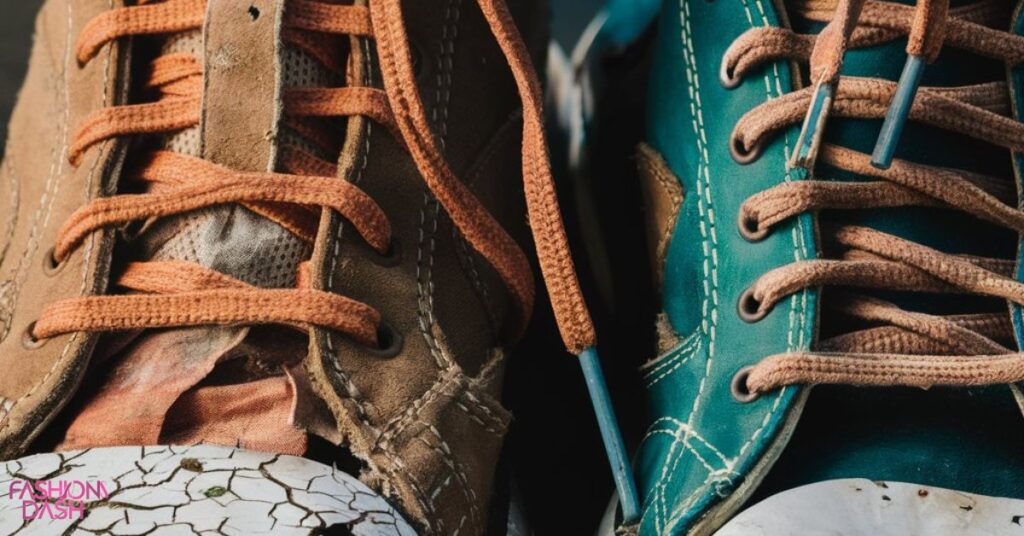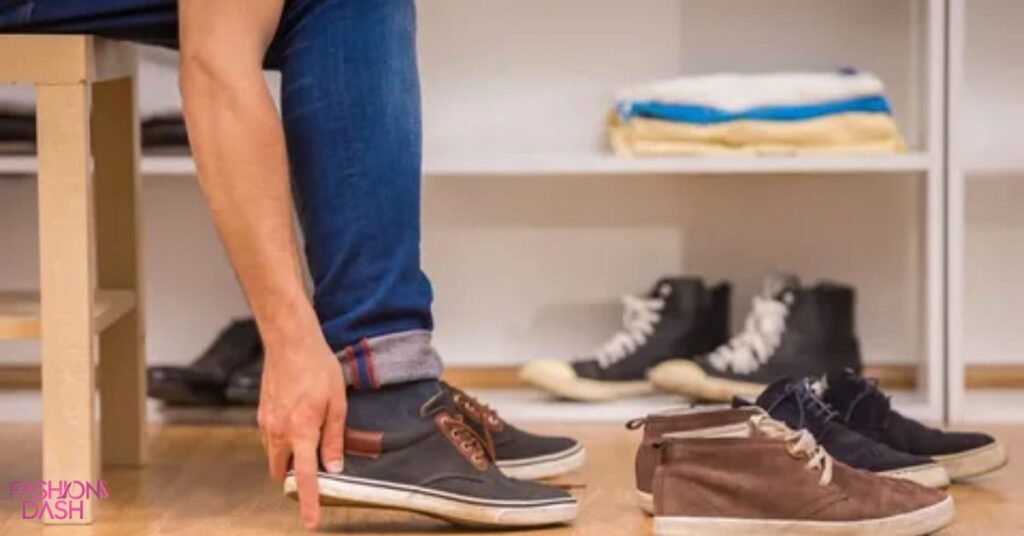How long should a pair of shoes last? This is a question that many of us have pondered at some point. Shoes are not just a fashion statement; they are also an essential part of our daily lives, providing support and protection for our feet.
Imagine stepping out in a brand-new pair of shoes, feeling confident and comfortable, only to have them wear out far too soon. How long should a pair of shoes last, and what can we do to ensure they stay in top condition for as long as possible?
From cleaning and storing to repairing minor issues, we’ve got you covered with practical advice. Join us as we delve into the world of shoe maintenance and help you keep your favorite pairs in top condition for years to come
Factors Affecting Shoe Longevity
The lifespan of a pair of shoes can vary widely depending on several factors. Understanding these factors can help you make informed decisions when purchasing shoes and caring for them to extend their longevity. Here are some key factors that influence how long a pair of shoes will last:
Quality of Materials
One of the most significant factors affecting shoe longevity is the quality of the materials used in their construction. Shoes made from high-quality materials, such as full-grain leather or durable synthetic fabrics, tend to last longer than those made from cheaper, less durable materials.
Frequency of Wear
How often you wear a pair of shoes plays a significant role in how long they will last. Shoes that are worn frequently will wear out more quickly than those that are worn less often. Rotating between multiple pairs of shoes can help extend their lifespan.
Type of Activity
The type of activity you engage in while wearing your shoes can also affect your longevity. For example, running shoes will wear out faster than casual sneakers due to the higher impact and stress placed on them during running.
Proper Care
Regular cleaning and maintenance can significantly extend the life of your shoes. This includes cleaning them regularly, waterproofing them, and getting them resoled when necessary. Proper care can help prevent damage and prolong the life of your shoes
Fit and Comfort
Shoes that fit well and are comfortable are less likely to wear out quickly. Shoes that are too tight or too loose can cause rubbing and pressure points, leading to premature wear and tear.
Signs It’s Time to Replace Your Shoe

Shoes are an essential part of our everyday lives, providing comfort, support, and style. However, like all things, shoes eventually wear out and need to be replaced. Here are some signs that indicate it’s time to say goodbye to your old pair and invest in a new one:
Worn-Out Soles:
The most obvious sign that it’s time to replace your shoes is worn-out soles. If you notice that the treads on the bottom of your shoes are significantly worn down, it’s time for a new pair. Worn-out soles can compromise traction and support, leading to discomfort and potential injury.
Visible Damage
Another clear sign that your shoes need replacing is visible damage. This includes holes, tears, or significant scuffing on the upper part of the shoe. Visible damage not only affects the appearance of your shoes but also indicates that they are no longer providing adequate protection and support for your feet
Lack of Support
Over time, the support and cushioning in your shoes can break down, especially if you wear them frequently. If you notice that your shoes no longer provide the support they once did, it’s time to replace them. Wearing shoes with inadequate support can lead to foot pain and discomfort
Persistent Odor
Despite your best efforts to keep your shoes clean and dry, if they continue to emit a foul odor, it may be a sign that they need replacing. Persistent odor can indicate that your shoes are harboring bacteria and fungi, which can lead to foot infections and other health issues.
Visible Wear Inside
Finally, check the inside of your shoes for signs of wear. This includes a flattened insole, visible damage to the lining, or worn-out padding. If the inside of your shoes shows signs of significant wear, it’s a good indicator that they need replacing.
ALSO READ THIS BLOG; HOW TO PREVENT SHOES FROM SLIPPING AT THE HEEL
Tips for Maintaining Your Shoes

Maintaining your shoes is essential to keep them looking good and lasting longer. Start by cleaning them regularly with a damp cloth to remove dirt and stains.
Regularly wipe your shoes with a damp cloth to remove dirt and stains. For leather shoes, use a leather cleaner and conditioner to keep them looking new.
Dry Them Properly: After wearing your shoes in the rain or snow, let them air dry naturally. Avoid using heat sources like hair dryers, as they can damage the material.
Rotate Your Shoes: Alternate between two or more pairs of shoes to allow them to dry out and recover their shape between wears.
Store Them Carefully: Keep your shoes in a cool, dry place away from direct sunlight and heat. Use shoe trees or stuff them with newspaper to help them maintain their shape.
Protect Them: Apply a waterproofing spray to protect your shoes from water and stains. Be sure to use a spray that is suitable for the material of your shoes.
Repair Them Promptly: Fix minor issues like loose seams or scuffed heels before they become major problems. This can help extend the life of your shoes
Use Shoe Horns: Use a shoe horn when putting on your shoes to prevent damage to the heel counter and maintain their shape
Avoid Excessive Wear: Try not to wear the same pair of shoes every day. Rotate between different pairs to reduce wear and tear.
Frequently Asked Questions
Can I make my shoes last longer?
Yes, by properly caring for your shoes, such as cleaning them regularly, storing them properly, and getting them resoled when needed, you can extend their lifespan.
How long do expensive shoes last compared to cheaper ones?
Expensive shoes made from high-quality materials and craftsmanship can last much longer than cheaper shoes, which may wear out after only a few months of regular wear.
Is it worth repairing old shoes, or should I just buy new ones?
It depends on the extent of the damage and the cost of repair. In some cases, repairing old shoes can be more cost-effective than buying new ones, especially if they are high-quality and have sentimental value.
Can I donate old shoes instead of throwing them away?
Yes, donating old shoes to charity or recycling them through programs like Nike’s Reuse-A-Shoe program is a great way to extend their life and reduce waste.
How can I tell if my shoes are worn out if they still look good on the outside?
Check the soles and insoles for signs of wear, such as thinning or flattening. Also, pay attention to how your feet feel when wearing them; if they’re no longer comfortable, it may be time for a new pair.
Conclusion
The lifespan of a pair of shoes can vary widely depending on factors such as quality, care, and frequency of wear. However, a good rule of thumb is to replace your shoes every 300-500 miles for running shoes and every 6-12 months for casual shoes, or when they show signs of significant wear or damage. By paying attention to these factors and knowing when to say goodbye to your old favorites, you can ensure that your shoes continue to provide the comfort and support you need.

Clara , a fashion blogger with four years of experience, specializes in creating captivating content on fashion trends, styling tips, and beauty hacks, establishing herself as a trusted resource for fashion enthusiasts.







